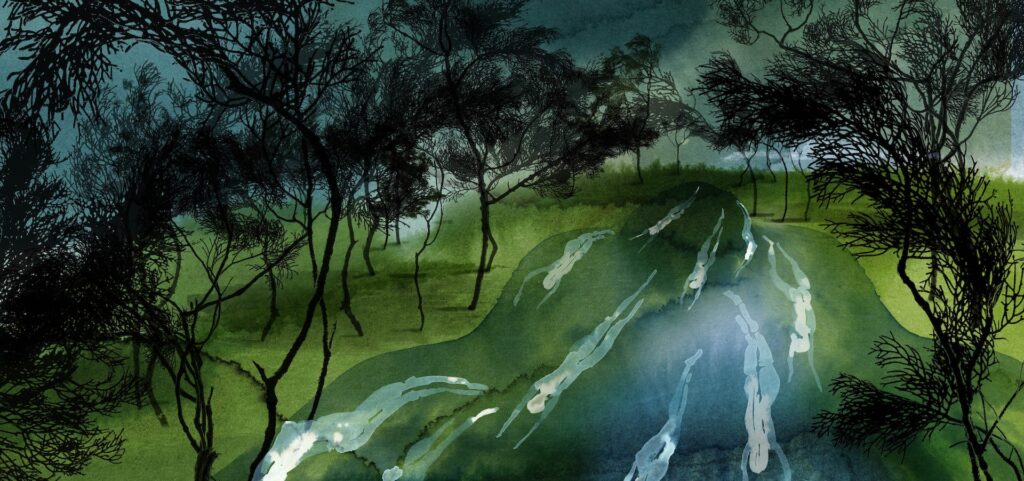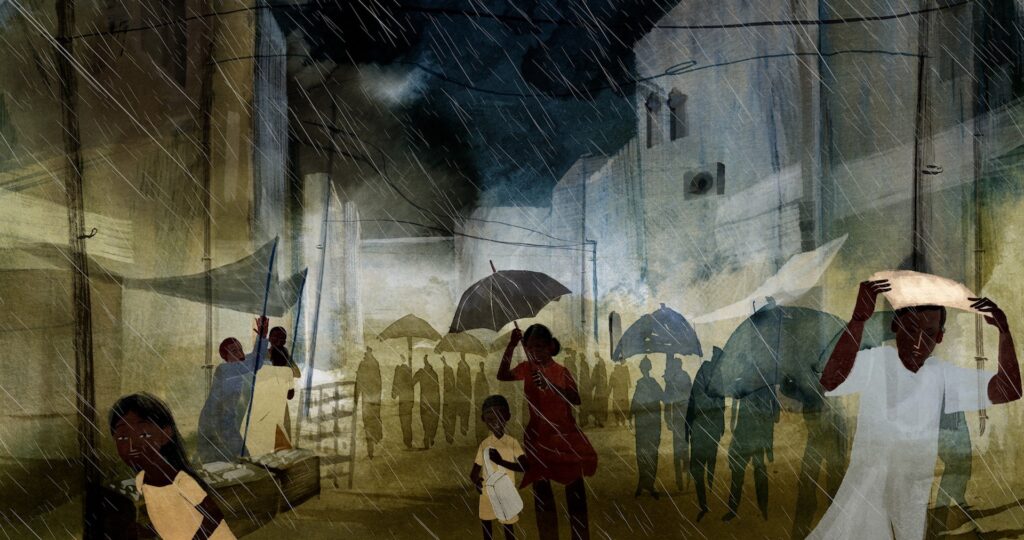A dream of feminism
While wondering through a bookstore in India, director Isabel Herguera stumbled upon the book Sultana’s Dream by Rokeya Hossain. In a similar situation, the protagonist of Sultana’s Dreams, Inés, also comes across this book. And although the most explicit similarity between director and protagonist ends here, this still feels like a deeply personal film, one that brings the viewer on a journey alongside the filmmaker — a feminist journey, through times, countries, styles, and, most importantly, ideas.

Together with Ines we travel to India, to break up with an irresistible but enigmatic lover. Here the viewer is steeped in beautiful watercolor 2D animation, full of vivid and layered imagery that almost makes you smell the places she visits. Through the discovery of the book, Inés’ journey then leads us right into Ladyland, the mystical land from Rokeya Hossain’s story. In this feminist utopia, a mirror image of Indian society back when the story was written in the early 1900s, men are locked away while women are in control. This technological advanced community is thriving, as female scientists have discovered how to trap solar power. There are no crimes, as men were considered responsible for all of them in the past. The animation style for the sequences displaying Ladyland is based on the Mehndi style, which is a style of ornamental temporary tattoo in South Asia, that is made using henna. A fitting choice, as this is a style of bodily decoration associated with festivities and femininity.
What is the place of a women in society? How has this changed throughout history? Has it really changed at all…?
The discovery of Sultana’s Dream and Ladyland opens up many pathways in Inés’ life. Searching for meaning and interpretation, she talks to personal friend Paul B. Preciado (a renowned scholar of many topics including identity, gender, and sexuality, who voices himself in this film) about the power of dreams. She visits her often absent, but exuberant and fun father on his filmset in Rome. Even a small lecture of Mary Beard about the first documented moment of male domination in literature is incorporated. It’s like the book is luring Inés towards her own future, prompting travel and new connections. In that process, a myriad of issues also rises from the depths of the film: what is the place of a women in society? How has this changed throughout history? Has it really changed at all…?

When the story dives into the history of Rokeya Hossain’s life, addressing how and in which context Sultana’s Dream was written, the film treats us to an animation cut-out technique which is beautifully adapted from shadow theatre. Especially splendid is the original choice of perspective, as when the point of view of the film dives behind a shawl to protect Inés from aggressive monkeys.
The ideas and concepts that are addressed in Sultana’s Dreams are fascinating and important; but it’s the rich textures of the different animation styles that allows for immersion in this layered narrative. When Herguera searches through history, through ideas, and through characters, she finds hope — a hope for a new and better future, full of freedom and dreams for everyone, including women.
SACHA GERTSIK is an Amsterdam based producer. In 2023 she founded the production company GROM Productions together with Steven Rubinstein Malamud. She has worked as a film journalist for the Dutch film magazine Filmkrant and as a development executive for the broadcaster BNNVARA.
Eight years ago she founded De Ontmoeting – a program that funds and distributes shorts by new talent. De Ontmoeting has since made over 60 shorts, launching many careers of filmmakers in The Netherlands.